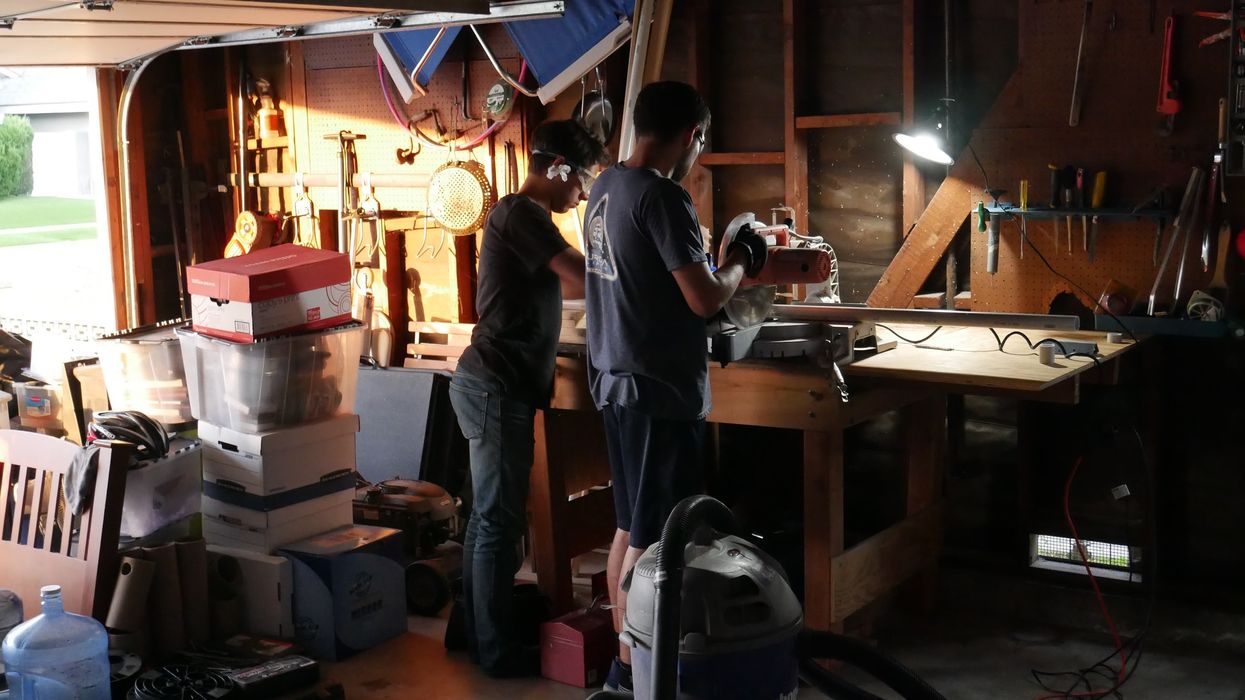How My Brothers and I Made a DIY Motion-Control Dolly to Make a Twin Movie… Without Twins
My twin brother, Ethan, and I have been making short films together since we were 11 years old. Our 2021 short, Amelia (the Twin) is, for obvious reasons, our most personal yet.

This post was written by the Montgomery Brothers.
The film was inspired by our own experience as identical twins. We spent nearly a year writing the script, constantly making adjustments as we discovered more and more about ourselves. After we finished the script, it took almost another year before the film was done. Why did it take so long? Well… maybe because we decided to portray twins with a single actress, and because we decided to build our own camera rig to pull it off.
Why Duplicate a Person on a Budget?
So why not just hire twin actors? Well, two reasons.
First, we had our sights set on a particular young actress, Emery Gordon, to play Amelia. She wasn’t a twin, so we’d have to duplicate her.
The second reason is that Ethan and I love visual effects. We started making films after our 6th-grade computer teacher taught us basic greenscreen, and VFX has continued to be one of our biggest fascinations. So making an effects-heavy movie, especially one that told a story we really cared about, was right up our alley.
Duplicating an actor seems simple enough, especially since it’s quite literally the oldest trick in the book (check out the work of George Méliès in the early days of film). You just shoot the actor in one place, then shoot them in another place and stitch them together, right?

Since we wanted all those things to happen in Amelia (the Twin), we decided to build a motion control camera rig that could precisely repeat a camera move multiple times. This has been done plenty of times before, perhaps most famously inBack to the Future II, where Michael J. Fox is duplicated up to four times in the same moving shot.
But back when they made that movie in 1989, the motion control rig was an enormous, multi-million dollar machine that took several days to set up. Ethan and I figured we could replicate the same basic idea with inexpensive, DIY electronics and some basic building materials. So that’s what we did.
Of course, Ethan and I needed some help to take this thing from dream to reality. Fortunately, our older brother Schuyler, who recently got his master’s degree in astronautical engineering, was glad to help.

How We Made Our DIY Motion Control Rig
The first step was making the dolly. We combined ideas from various YouTube videos to come up with a design that used a wooden frame, PVC pipe (which we later swapped for steel pipe for stability), and skateboard wheels. We finished 12-foot long dolly within a month or so and used it on some music videos, but the rig was far from motion-controlled.
The next step was a robotic pan and tilt head. This was primarily Schuyler’s department. He and a friend came up with a design that could support a DSLR camera and point the camera in pretty much every direction except straight down. To test it, we hooked it up to an old remote from a remote-controlled car. Seeing it in action was the first time we all felt like this might all really work.

After months of trying and trying again, we had a working dolly track. Well, “working,” meaning it moved with precision, but we still had to figure out how to tell it where and when to move.
After designing, building, redesigning, and rebuilding a tripod to firmly hold the pan and tilt the head as it moved, we were able to put the whole rig together and focus on troubleshooting and software.

While all this was happening, Ethan and I were prepping to shoot the film. We assembled a small but mighty crew, cast all our actors, storyboarded every single shot, and figured out a shooting schedule. At this point in our timeline, with the mechanics of the motion control rig functioning but missing software entirely, we were only a couple of weeks away from the shoot.
It was stressful, and it would be a shame if our year of work went to waste. This thing had to work.
In the nick of time, two days before the shoot, Schuyler got his homemade code working.

In post-production, Ethan stitched the shots together in After Effects, and magic happened. The crazy thing was we started to forget we weren’t looking at real twins. The effect worked perfectly.
Amelia (the Twin) went on to perform well at festivals, screening at Palm Springs International Shortfest, Dances With Films LA, Newport Beach Film Festival, and more. It also won the Best Drama and Best Narrative Film awards at Redeem TV Film Festival and was nominated for a College Television Award. We even made the news with a little segment about our rig on KTLA!
We learned a ton making the film, not just about how to build a robot camera, but about how to tell stories that come from the heart. The visual effects in the film wouldn’t have meant much at all if the film didn’t move and entertain an audience.
If we have any advice for other filmmakers after making Amelia, it’s to dig deep into personal experience, write stories you care about, and let the rest follow. Oh, and if you’re gonna make a movie about twins, it might be easiest to just cast a real pair of twins.
This post was written by the Montgomery Brothers.











